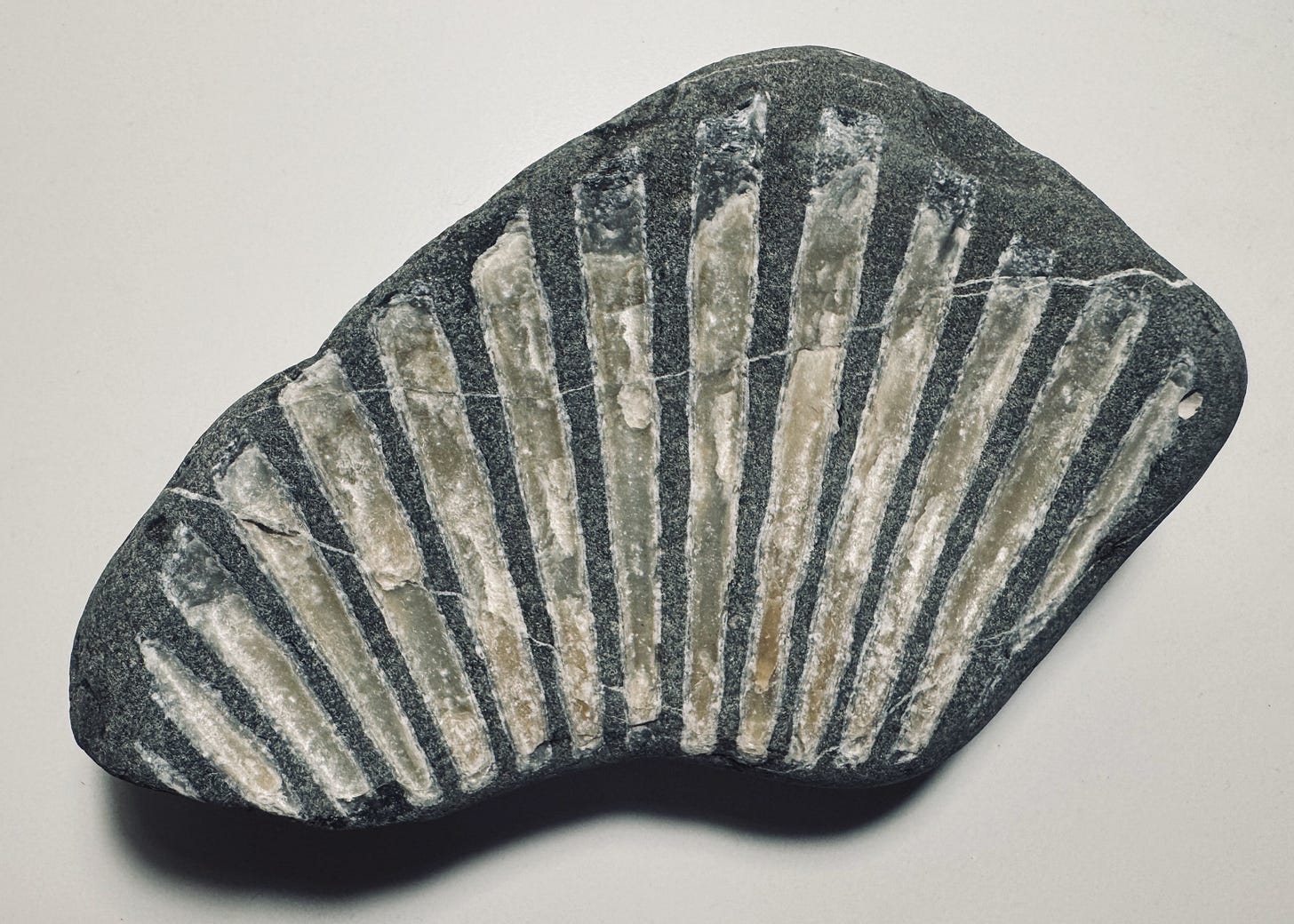Pectinidae
Poking around in the tide pools. The anemone—fat, purple tendrils around a deep emerald core, inviting you to come a little closer, peer into me, maybe I'm hiding what you've been looking for all along—the anemone cluster as if to conceal the rocks worn mirror-smooth, rocks that knew a younger Sun, rocks whose solid bulk forms the headstones of a million clams and oysters, now no more than crooked, crystal geometry, life spelling its own epitaph in death.
The receding tide has revealed an expanse of barnacles anchored to the ancient sediment. Barnacles, in fact, are so averse to letting go that they synthesize cement inside their bodies. I guess I know the feeling. I wrote a letter to someone a while ago that I had the good sense not to send; but I reread it every so often, slowly, aware that each sentence contains books unwritten.
In my life, and on this blog, I usually maintain a triumphant tone—endlessly learning from mistakes, extracting meaning and motivation from pain, analyzing the world until finding happiness seems as straightforward and natural as calculus. And when circumstances push triumph beyond my reach I still cling to defiance. Down, but not broken. Never broken.
It seems time, though, to allow that resolve to soften; I want to live not in spite of life, but in celebration of it. In my research I trace the gossamer threads linking evolution to computation, seeking a mathematical reason for the existence of all life. There is the temptation, of course, to reduce my work to an assertion of my own existence; to be motivated by a desire to show everyone that I do, in fact, matter. But just one trip to the tide pools washes those feelings away. The shapes in those rocks speak from the depths of time. They say not look at me but—the first cell divides once, twice, then again and again; the cyanobacteria oxygenate the atmosphere; tree ferns unfurl beneath the Devonian sky—look at all of this.


